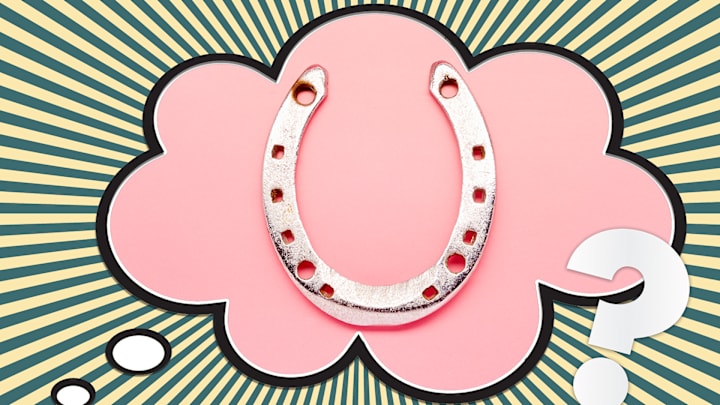Few good luck charms are as recognizable as the horseshoe. You’ll find them hanging over the entrances of homes and barns and depicted on clothing, jewelry, and in your magically delicious cereal. People even gift them to newlyweds. But why is this humble horse hoof accessory a symbol of luck?
A Brief History of Lucky Horseshoes

One of the earliest mentions of a horseshoe being used to ward off evil is a 10th-century tale that involves the patron saint of blacksmiths, Saint Dunstan, and his encounter with the devil. The legend says that one fateful day, as the blacksmith worked in his shop, the devil entered and demanded shoes for his own hooves. Saint Dunstan knew he could not refuse the request, so he nailed burning hot horseshoes forcefully into Satan’s hooves. The horrific pain made the devil beg the blacksmith to remove the shoes. Saint Dunstan agreed under one condition—Satan would have to swear never to enter any place with a horseshoe hanging at the entrance.
Other folk tales surrounding the horseshoe involved not their maker, but their material. Iron had what many considered to be “mystical powers.” Witches were said to be so afraid of iron that they never traveled by horseback, and some thought it could drive off fairies and other mythical creatures. The iron in the shoes was so valuable that people could use them to pay their taxes during the 12th-century Crusades.
Another theory is that the horseshoe’s symbolism comes from Mediterranean cultures who believed the crescent shape—similar to that of a horseshoe—served as protection against the curse of the evil eye. Archaeologists have uncovered many ancient amulets in the recognizable horseshoe shape that were likely employed as protection against negative forces and misfortune.
Horseshoes are also linked to the number seven, considered one of the luckiest numerals. It’s significant in many world religions, including Christianity, Islam, Judaism, Hinduism, and Buddhism, and takes on an important role in music and mathematics. Horseshoes traditionally had seven nail holes (though that number now varies).
We can’t forget the horses themselves. Not only have horses greatly shaped human history, but several cultures have historically viewed the animals as sacred or lucky [PDF].
How to Hang a Horseshoe For Good Luck

There’s some debate about which direction you should hang a horseshoe. Some hang their horseshoes with the ends facing upwards (forming the shape of a U) so the luck stays within it; others position them with the ends facing down so the good luck flows out toward those who pass by it. There’s even a belief that hanging a horseshoe with the ends facing down is unlucky because it will cause all the good fortune to spill out.
If you want the luckiest of all lucky horseshoes, pay attention to the horse who wore it. Some people believe you should choose one that came from the hind leg of a gray mare. And if you need to prevent a witch from stealing your butter, place the shoe of a 2-year-old filly on the churn.
Have you got a Big Question you'd like us to answer? If so, let us know by emailing us atbigquestions@mentalfloss.com.
